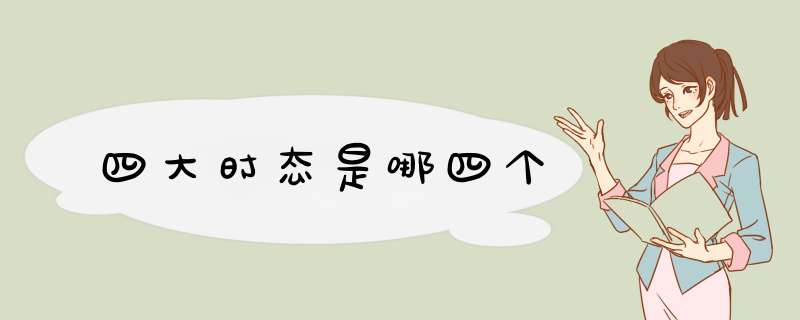
一般过去时
一般将来时
现在进行时
【一般现在时态】
是所有时态中最常用的一种时态,要么把它排在第一位。
标志词:always(总是) usually(通常) often(经常) sometimes(有时) never(从不) every(每一)
行为动词词型变化形式
一般现在时动词只有第三人称有词形变化,
其他人称(第一人称:I, we;第二人称:you;第三人称复数:they、my friends)动词均用原形
当主语是第三人称单数时,一般动词在一般现在时句子中的变化规律:
1、多数在动词后加s play—plays like—likes ,
2、以s,x,sh,ch,o结尾的动词加es wash–washes catch–catches do–does
3、以辅音字母加y结尾,把y改i再加es fly—flies study—studies
4、以元音字母加y结尾,直接加s buy – buys
5、不规则变化 have—has
一般现在时基本用法
功能
1.表示事物或人物的特征、状态。
如:The sky is blue.天空是蓝色的。
2.表示经常性或习惯性的动作。
如:I get up at six every day.我每天六点起床。
3.表示客观现实。
如:The earth goes around the sun.地球绕着太阳转。
构成
1.be动词:主语+be(am,is,are)+其它。
如:I am a boy.我是一个男孩。
2.行为动词:主语+行为动词(+其它)。
如:We study English.我们学习英语。
句型
肯定句:A.be动词:主语+ be + 其它成分
He is a worker.
B.行为动词:主语+动词(注意人称变化) +其它成分 We like the little cat.
否定句:A.be动词:主语+ be + not +其它成分
They are not students.
B.行为动词:主语+助动词(do/does) + not +动词原形+其它成分
We don’t like the little cat.
一般疑问句:A.be动词: Am / Is /Are +主语 + 其它成分?
Are you a teacher? Yes, I am. / No, I am not.
Are they students of your school.Yes they are / No they aren,t.
B.行为动词:助动词(Do/Does)+主语+动词原形 + 其它成分
Do you like it? Yes, I do. / No. I don’t .
Does he(she) like it? Yes, he( she )does. / No, he ( she )doesn’t.
特殊疑问句:疑问词+ 一般疑问句?
A.be动词: How many students are there in your school?
B.行为动词:What do you usually do on Sunday?
一般现在时动词be和 have的变化形式
1.动词Be 叫连系动词, 用法:第一人称单数用am,第三人称单数用is,其它人称用are。
2.动词have的用法:第三人称单数用has以外,其它人称一律用have。如:
注意事项 1.在英国,人们常用have got代替have,特别在疑问句和否定句中。
2.当have如果不表示“有”时,构成疑问或否定句时,就借助于助动词do, does
如:I have a new pen .
否:I have not a new pen. (表示有)
I have lunch at 12 o’clock.
否:I don’t have lunch at 12 o’clock. (表示吃)
【现在进行时态】
You are reading now!
现在进行时:
标志词:now, look, listen,It’s+时间.
现在进行时: 表示正在进行的、发生的动作
基本结构:
am
is + 动词 ing
are
肯定句:主语 + be动词(am, are, is)+ 现在分词(ing)+ 其他 I am watching TV.
否定句:主语 + be动词+ not + 现在分词(ing)+ 其他 I am not watching TV.
一般疑问句:Be动词(Am, Are, Is) + 主语 + 现在分词(ing)+ 其他 ?
Are you watching TV? Yes, I am. / No, I am not.
特殊疑问句:疑问词+ 一般疑问句?
What are you doing?
动词的-ing形式的变化规律:
1. 直接加-ing watch—watching clean—cleaning
2. 以-y结尾的动词,直接加-ing study—studying play—playing
3. 以不发音的-e结尾的动词,先去-e再加-ing make—making come—coming
4. 末尾只有一个元音字母和一个辅音字母的重读闭音节动词,
双写末尾字母,再加-ing cut—cutting
【一般将来时态】
我认为是所有时态中最简单的一种时态了,记住公式一切都Bingo了!
一般将来时的用法:
表示将来某一时刻的动作或状态,或将来某一段时间内经常的动作或状态。
标志词:tomorrow(明天),the day after tomorrow(后天),next (下一个),
from now on(从现在开始),in the future(将来),soon(不久)等
结构:
( 1 ) be(am,is ,are) +going to+动词原形
( 2 ) will+动词原形
“be going to+动词原形(打算…)”=”will+动词原形(将,会…)”
I’m going to study tomorrow. I will study tomorrow.
(be going to着重于事先考虑好 will 未事先考虑好)----一般不用考虑
肯定句:主语 + be (am, are, is) going to + 动词原形.
主语 + will + 动词原形
否定句:主语 + be (am, are, is) not going to + 动词原形.
主语 + won’t + 动词原形.
一般疑问句:Be (Am, Are, Is) + 主语 + going to + 动词原形?
Will + 主语 + 动词原形?
特殊疑问句:疑问词+ 一般疑问句?
注意:will 常简略为 'll,并与主语连写在一起,如:I'll,he'll,it'll,we'll,you'll,they'll。
【一般过去时态】
这个时态需要注意的动词的变化,经常考察到。
一般过去时
标志词:yesterday(昨天), last (上一个), this morning(今天早上),ago(以前),
before (在…之前), in 2002(在2002年) 等
用法:表示过去某个时间发生的动作或存在的状态,常和表示过去的时间状语连用。
也表示过去经常或反复发生的动作
动词过去式变化规则:
1.一般在动词末尾加-ed 如:watch-watched, cook-cooked
2.结尾是e加d 如:taste-tasted
3.末尾只有一个元音字母和一个辅音字母的重读闭音节,应双写末尾的辅音字母,再加-ed,如:stop-stopped
4.以“辅音字母+y”结尾的,变y为i, 再加-ed,如:study-studied
5.不规则动词过去式:am,is-was, are-were, do-did, see-saw, say-said, give-gave…
句型:
1、Be动词在一般过去时中的变化:
⑴am 和is 变为was。 否定(was not=wasn’t)
⑵are 变为were。 否定(were not=weren’t)
否定句:在 was或were后加not
一般疑问句:把was或were调到句首。
2、行为动词在一般过去时中的变化
否定句:didn’t + 动词原形 如:Jim didn’t go home yesterday.
一般疑问句:在句首加Did,句子中的动词过去式变回原形 如:Did Jim go home yesterday?
特殊疑问句:(1)疑问词+did+主语+动词原形? 如: What did Jim do yesterday?
(2)疑问词当主语时:疑问词+动词过去式? 如:Who went to home yesterday?
附录:小学常用不规则动词过去式
一、不规则动词的过去式的构成
1.把动词原形中的i改为a,变成过去式。如:
begin—began,drink—drank,give—gave,ring—rang,sing—sang,sit—sat,swim—swam
2.把重读开音节中的i改为o,变成过去式。如:
drive—drove,ride—rode,write—wrote
3.改动词原形中的aw /ow为ew,变成过去式。如:
draw—drew,grow—grew,know—knew,throw—threw(动词show除外,show—showed)
4.动词原形中的e改为o,变成过去式。如:
get—got,forget—forgot
5.动词原形中的ee改为e,变成过去式。如:
feed—fed,meet—met
6.动词原形中的eep改为ept,变成过去式。如:
keep—kept,sleep—slept,sweep—swept
7.动词原形中的eak改为oke,变成过去式。如:
break—broke,speak—spoke
8.动词原形中的ell改为old,变成过去式。如:
sell—sold,tell—told
9.动词原形中的an改为oo,变成过去式。如:
stand—stood,understand—understood
10.以ought和aught结尾,且读音是〔 :t〕的过去式。如:
bring—brought,buy— bought,think—thought,catch—caught,teach—taught
11.以ould结尾且读音为〔ud〕的情态动词过去式。如:
can—could,shall—should,will—would
12.把动词原形中的o改为a,变成过去式。如:
come—came,become—became
13.在动词原形后加d或t变成过去式,并且发生音变。如:
hear〔hi 〕—heard〔h :d〕, say〔sei〕—said〔sed〕,mean〔mi:n〕—meant〔ment〕
14.动词的过去式与动词原形一样。如:
let—let,must—must,put—put,read—read〔red〕
二.不规则动词表
原形 过去式 中文释义
am was 是(表示存在、状态等)
are were 是(表示存在、状态等)
become became 成为;变成
begin began 开始
break broke 打破
bring brought 拿来;取来;带来
build built 构筑;建造;建筑
buy bought 购买;买
can could 可以;能;可能;会
catch caught 赶上(车船等);捕获
come came 来;来到
cut cut 切;割;削;剪
do/does did 做;干;行动
draw drew 画
drink drank 喝;饮
drive drove 开车;驾驶
eat ate 吃
feel felt 感到;觉得
find found 寻找;查找
fly flew 飞行
forget forgot 忘记;忘却
get got 变得
give gave 给;授予
go went 去
have/has had 得(病);患(病);有;吃;饮
hear heard 听见;听说
hide hid 隐藏
is was 是(表示存在、状态等)
keep kept 保持;使保持某种状态
know knew 知道;了解
leave left 离去;出发
let let 允许;让
lose lost 失去;丧失
make made 使;促使;迫使;做;制作
may might 可能;可以
mean meant 表示……的意思;作……的解释
meet met 遇见;相逢
put put 放;摆;装
read read /e/ 读;阅读
ride rode 骑
ring rang (铃)响
rise rose 上升
run ran 跑;奔跑
say said 说;讲
see saw 看见
send sent 发送;寄;派;遣
set set 放, 置
show showed 出示;给……看
shut shut 关上(门、盖、窗户等)
sing sang 唱;唱歌
sit sat 坐
sleep slept 睡;睡觉
speak spoke 说;说话
swim swam 游泳
take took 搭乘;花费(时间);拿走;带到
teach taught 教;讲授
tell told 告诉;讲述
think thought 想;思考
will would 将要
win won 赢;获胜
write wrote 书写
一、一般现在时:概念:经常、反复发生的动作或行为及现在的某种状况.
时间状语:often,usually,always,sometimes,every week(day,year,month...),once a week,on Sundays,etc.
基本结构:①be动词;②行为动词
否定形式:① am /is /are +not;②此时态的谓语动词若为行为动词,则在其前加don't,如主语为第三人称单数,则用doesn't,同时还原行为动词.
一般疑问句:①把be动词放于句首;②用助动词 do提问,如主语为第三人称单数,则用does,同时,还原行为动词.
二、一般过去时:
概念:过去某个时间里发生的动作或状态;过去习惯性、经常性的动作、行为.
时间状语:ago,yesterday,the day before yesterday,last week(year,night,month...),in 1989,just now,at the age of 5,one day,long long ago,once upon a time,etc.
基本结构:①be动词;②行为动词
否定形式:① was/were +not;②在行为动词前加didn't,同时还原行为动词.
一般疑问句:①was或were放在句首;②用助动词do的过去式did提问,同时还原行为动词.
三、现在进行时:
概念:表示现阶段或说话时正在进行的动作及行为.
时间状语:now,at this time,these days,etc.
基本结构:am/is/are +doing
否定形式:am/is/are +not+doing
一般疑问句:把be动词放在句首
四、过去进行时:
概念:表示过去某段时间或某一时刻正在发生或进行的行为或动作.
时间状语:at this time yesterday,at that time或以when引导的谓语动词是一般过去时的时间状语等.
基本结构:was/were +doing
否定形式:was/were +not+doing
一般疑问句:把was或were放在句首
五、现在完成时:
概念:过去发生或已经完成的动作对现在造成的影响或结果,或从过去已经开始,持续到现在的动作或状态.
时间状语:recently,lately,since...,for...,in the past few years,etc.
基本结构:have/has +done
否定形式:have/has +not+done
一般疑问句:have/has放于句首
六、一般将来时:
概念:表示将要发生的动作或存在的状态及打算、计划或准备做某事.
时间状语:tomorrow,next day(week,month,year....),soon,in a few minutes,by...,the day after tomorrow,etc.
基本结构:①am/is/are/going to +do;②will/shall+do
否定形式:①am/is/are +not+going to +do;② will/shall+not+do
一般疑问句:①be放于句首;② will/shall提到句首
欢迎分享,转载请注明来源:内存溢出

 微信扫一扫
微信扫一扫
 支付宝扫一扫
支付宝扫一扫
评论列表(0条)